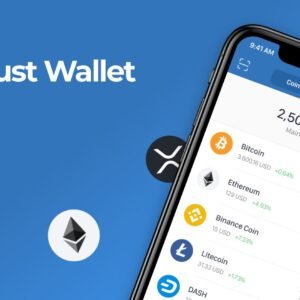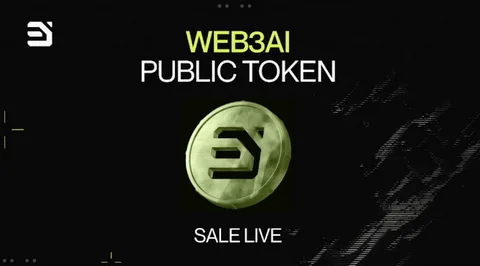Introduction
Bitcoin, since its inception in 2009, has evolved from a fringe digital currency into one of the most talked-about financial assets globally. Often compared to traditional assets like gold and the S&P 500, Bitcoin’s role in the financial ecosystem remains a topic of debate.
What if a hidden catalyst exists, one that has the potential to propel it into a dominant market position? This overlooked factor may signal a fundamental shift in how investors perceive Bitcoin, especially when compared to gold and the S&P 500.
In this blog post, we will explore this hidden catalyst and examine how it could shape Bitcoin’s future. From understanding it’s digital scarcity to exploring macroeconomic factors, we will uncover why Bitcoin may soon become the preferred store of value for investors around the world.

The Digital Scarcity Debate: Bitcoin vs. Gold
In any conversation about Bitcoin’s market position, compared to traditional assets like gold, the concept of scarcity often dominates. Gold, as a physical commodity, has been considered a safe haven for centuries. It is scarce and finite, making it a reliable store of value during economic downturns. it, often referred to as “digital gold,” operates under a similar scarcity model, with its supply capped at 21 million coins.
However, it’s scarcity comes with additional benefits, as its supply schedule is programmatically determined and not subject to the discovery or mining of new physical deposits like gold. This makes Bitcoin’s inflationary controls far more predictable, potentially positioning it as a superior alternative. The hidden factor many overlook is how this predictability might enhance it’s long-term investment potential—particularly in an era where trust in central banks and fiat currencies is waning.
Unlike gold, it’s market performance has shown explosive growth over the past decade, fueled by technological innovations and increasing institutional adoption. As more investors seek out assets immune to government manipulation, it’s overlooked digital scarcity could be the very catalyst that propels it to overtake gold in terms of perceived value. The growing recognition of Bitcoin’s scarcity is only now beginning to signal a shift in its position as a competitor to traditional stores of value.
The Financialization of Bitcoin: Competing with the S&P 500
While gold is a direct competitor to it in terms of store of value, the S&P 500 offers another avenue of comparison. Historically, the S&P 500 has served as a benchmark for equity markets, representing the overall health of U.S. stocks. Investors flock to the index for its diversified exposure and long-term returns, but what happens when it enters the equation?
One overlooked aspect of it’s growing market position is its financialization. The introduction of Bitcoin futures, ETFs, and derivatives markets has allowed it to compete directly with traditional equities. Institutional investors who previously would have only considered stocks or bonds can now include Bitcoin in their portfolios. This financialization is signaling a shift in how Bitcoin is perceived—not just as a speculative asset but as a viable competitor to the S&P 500 in terms of long-term growth.
Moreover, it’s correlation with traditional markets is evolving. While historically Bitcoin has been volatile and often moves independently of stocks, there are growing signs that it could become a counter-cyclical hedge. As more capital flows into the it market from institutional investors, its price stability could improve, reducing volatility and allowing it to act as a potential hedge against downturns in equities, much like gold has done in the past.
This development could be a key catalyst for it’s rise as a diversified asset, allowing it to signal a new era of financial markets where digital assets like it coexist and compete with traditional financial instruments like the S&P 500.
Macroeconomic Trends Favoring Bitcoin: Inflation, Debt, and Fiscal Policy
One of the most overlooked elements that could signal Bitcoin’s rise is the macroeconomic environment. Over the past few years, the world has seen unprecedented levels of fiscal stimulus, increasing debt loads, and rising inflation. Central banks, particularly the Federal Reserve, have injected trillions of dollars into the economy to combat the effects of the pandemic and other crises. While this has helped stabilize economies in the short term, it has also led to concerns about long-term inflation and the devaluation of fiat currencies.
In such an environment, Bitcoin’s fixed supply and decentralized nature make it a compelling alternative to traditional financial assets. While gold has historically been the go-to asset during inflationary periods, Bitcoin offers a modern solution that is easily transferable, globally accessible, and increasingly accepted by institutions. As the U.S. dollar and other fiat currencies continue to face inflationary pressures, it’s potential as a hedge becomes increasingly apparent.
The question now is whether Bitcoin will truly replace gold as the preferred hedge against inflation. As institutional investors look for alternatives to safeguard their wealth, the stage is set for Bitcoin to challenge not only gold but also traditional equity markets like the S&P 500. This overlooked macroeconomic catalyst could serve as the tipping point for it to cement its market position as the ultimate inflationary hedge, compared to gold and other traditional assets.
Bitcoin’s Position in a Digital-First World: The Future of Finance
Finally, one of it’s greatest advantages, and perhaps its most overlooked potential catalyst, lies in its digital nature. As the world becomes increasingly digitized, with everything from banking to commerce happening online, Bitcoin’s inherent qualities make it perfectly suited for the future of finance. It offers instant, borderless transactions, unlike gold or traditional equities, which require intermediaries and often involve high fees and delays.
In a world where digital finance is rapidly growing, it’s position as a decentralized, trustless system provides a significant edge over both gold and the S&P 500. It aligns with the rise of Web3, decentralized finance (DeFi), and digital ownership, where individuals are looking for alternatives to centralized institutions. This is particularly relevant in emerging markets, where access to banking and investment opportunities is limited. Bitcoin allows these populations to participate in the global economy in a way that gold and the S&P 500 simply cannot.
Moreover, it’s role in shaping the future of decentralized financial systems is becoming more apparent as new platforms and applications are built on blockchain technology. While this development is still in its early stages, it represents an overlooked signal that it may soon occupy a central position in the future of digital finance, compared to traditional assets.
Conclusion
Bitcoin’s hidden potential lies not just in its current market position, but in the overlooked catalysts that could propel it to new heights. Whether it’s the advantages of digital scarcity compared to gold, the financialization of it as a competitor to the S&P 500, or the shifting macroeconomic landscape, these factors are beginning to signal a profound shift in how Bitcoin is perceived by investors. The future of finance is digital, and Bitcoin is at the forefront of this transformation.
As we continue to witness these trends unfold, Bitcoin may soon find itself in a stronger position compared to gold and the S&P 500, not just as an alternative asset, but as the preferred store of value and hedge against economic uncertainty.
What do you think? Do you believe Bitcoin will surpass gold or the S&P 500 in the near future? Let us know your thoughts in the comments below!






